Ready to turn the world into your classroom and make every family trip an unforgettable learning adventure?
As a seasoned travel planner and semi-budget traveler, I’ve had the wonderful opportunity to explore a myriad of destinations with my family while homeschooling on the go.
Traveling homeschoolers, like us, get to experience the joy of learning in diverse settings, from bustling cities to serene landscapes.
Through years of planning and adventure, I’ve gathered a wealth of knowledge and tips to help make your homeschooling journey as enriching and enjoyable as possible.
Let’s dive into how you can seamlessly blend education and exploration for an unforgettable experience!
SBT Highlights
- Traveling homeschoolers can use every destination as a classroom.
- Build a curriculum around your travels with local resources.
- Group trips with other homeschool families offer shared learning experiences.
HI THERE! DON’T FORGET TO PIN THIS FOR LATER!
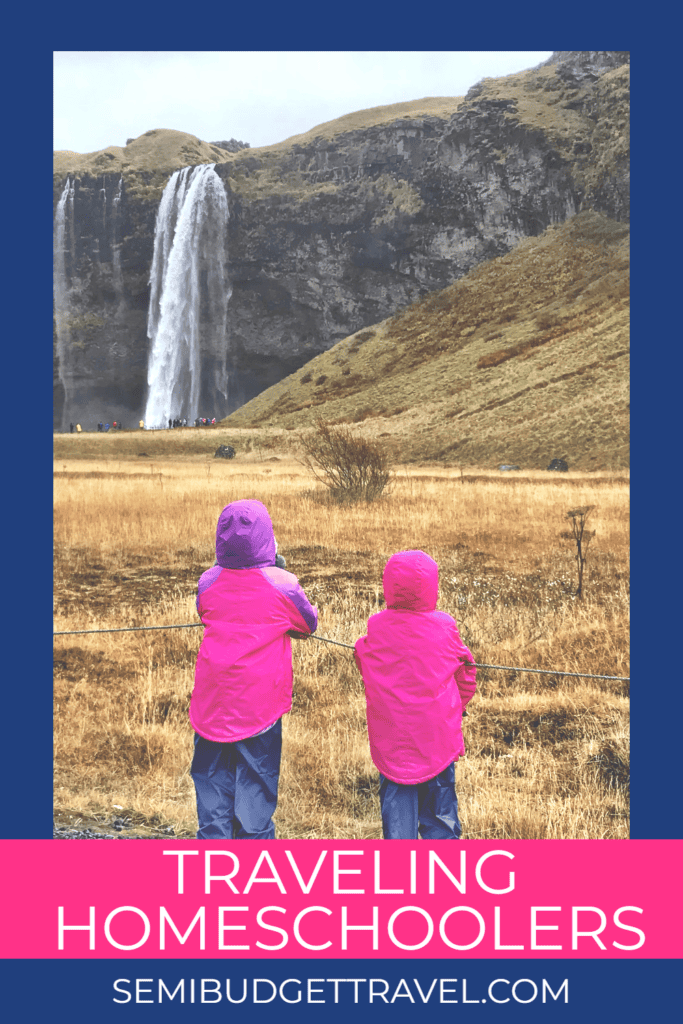
Traveling Homeschoolers
Embarking on the journey of homeschooling while traveling offers a unique opportunity for your family. The flexibility allows you to turn every destination into a classroom.
Traveling homeschoolers gain hands-on, experiential learning that traditional settings can’t match.
You can immerse your children in the history of Washington, D.C. or the natural wonders of national parks.
You can build a curriculum designed around your travels, using resources like local museums, historical sites, and nature trails.
Attractions, such as zoos and botanical gardens, provide endless lessons in science and geography.
Homeschooling on the road isn’t just about the destinations; it’s about turning every moment into a learning experience.
Planning group trips with other homeschooling families can also be a great way to enhance learning.
Engage in hands-on projects, participate in local events, and embrace the freedom to teach your children in the best classroom there is—the world.
Laying the Foundation for Traveling Homeschoolers
Setting up a strong homeschooling plan while you’re constantly on the road involves juggling different educational methods and keeping track of various legal requirements. Here’s how you can make it work.
Education on the Move: Homeschooling vs. Traditional Schools
When it comes to traditional schools versus homeschooling on the go, the flexibility of homeschooling wins. You can tailor lessons to fit your child’s needs and interests. No more rigid schedules or commuting to a physical school building.
Subjects can be covered through real-world experiences.
Imagine teaching history by visiting ancient ruins or learning biology through nature hikes. You create an environment where every place visited becomes a classroom.
Unlike a public school, you don’t need to stick to a one-size-fits-all curriculum. Instead, blend done-for-you with your own lesson plans for a richer learning experience.
I am not an attorney, so I am not providing legal advice, but I am a long-time travel & homeschool mom. I encourage you to do your own research and come to your own conclusions as to what’s best for your family!
Understanding State Laws and Homeschool Requirements
Navigating homeschool laws can be tricky. Each state has its own requirements, and you must stay up-to-date to avoid any legal hiccups.
Some states require you to submit an education plan or maintain a portfolio of your child’s work while others might need standardized test scores.
Knowing these requirements is essential for a smooth journey.
Keep a digital or physical record of your child’s progress, like photos of projects, lists of books read, and summaries of lessons.
Designing the Ultimate Homeschool Curriculum
As you plan your homeschooling journey, a well-rounded curriculum is key. This involves creating a rich learning experience, integrating your travels into social studies and language arts, and considering different ages and needs.
Crafting a Rich Learning Experience Beyond Books
You don’t have to rely solely on textbooks. When homeschooling on the go, utilize educational resources like museums, historical sites, and nature parks to create hands-on learning adventures.
For instance, a trip to the Grand Canyon can turn into an exciting geology lesson.
Field trips to local markets can also teach math and economics.
Create interactive projects such as building models of the monuments you visit.
By doing this, your kids get a practical understanding of important concepts while making learning enjoyable.
Incorporating Social Studies and Language Arts Through Travel
Traveling offers a unique way to bring social studies and language arts to life.
Your family travels can turn cities like Washington D.C. into a living classroom.
Visiting landmarks, museums, and political sites provides firsthand experiences of history and government.
For language arts, reading novels set in your travel destinations can deepen understanding.
Encourage kids to keep travel journals, enhancing their writing skills.
Discussions about the books and places they visit will improve their analytical and communication abilities, making school work more engaging and relatable.
Special Considerations for Different Ages and Needs
Different ages have different educational demands.
Younger children often need more guidance and interactive learning, while older ones might benefit from more independent research projects and digital educational resources.
For children with special needs, plan activities that cater to their learning styles. Visual aids, hands-on activities, and consistent routines can be very effective.
Customize the pace and style of learning to suit their individual needs, ensuring every child gets the most from their homeschooling experience.
Embracing Adventures as Educational Resources
Traveling offers unique opportunities to transform everyday adventures into valuable educational experiences.
Whether it’s a day trip to a nearby museum or an extended journey through foreign countries, the whole world becomes a classroom filled with hands-on learning and cultural immersion.
From Day Trips to Extended Journeys: Structuring Travel for Learning
Day trips can be simple yet effective ways to learn.
Visiting local historical sites, museums, or science centers offers practical field trips that spark curiosity.
For example, a day trip to a local history museum can turn into a treasure hunt for historical facts, making learning engaging and fun.
Planning extended trips requires more structure.
You’ll need to balance travel experience with educational goals.
Extended journeys allow your family to dive deep into new cultures.
Imagine spending a month in Spain. You can explore Spanish architecture, taste local cuisine, and maybe even pick up some Spanish words. This way, learning isn’t limited to books; it’s part of everyday life.
Both kinds of trips encourage children to learn geography, history, and science through experience. They also teach valuable life skills, such as planning and budgeting.
The Power of Hands-On Experiences in Foreign Countries
Foreign countries offer hands-on experiences that enrich education beyond classroom walls.
Imagine your child learning about ancient Rome while standing among the ruins of the Colosseum. Such immersive experiences make history come alive in ways textbooks can’t.
Different cultures also provide rich lessons. By interacting with local communities, children learn empathy and global awareness.
Everyday activities, like shopping at a local market or using public transport, become lessons in social studies and economics.
Travel fosters adaptability. Figuring out a new place, its customs, and even a new language strengthens problem-solving skills. Your child learns not just facts, but how to be a resilient and curious global citizen.
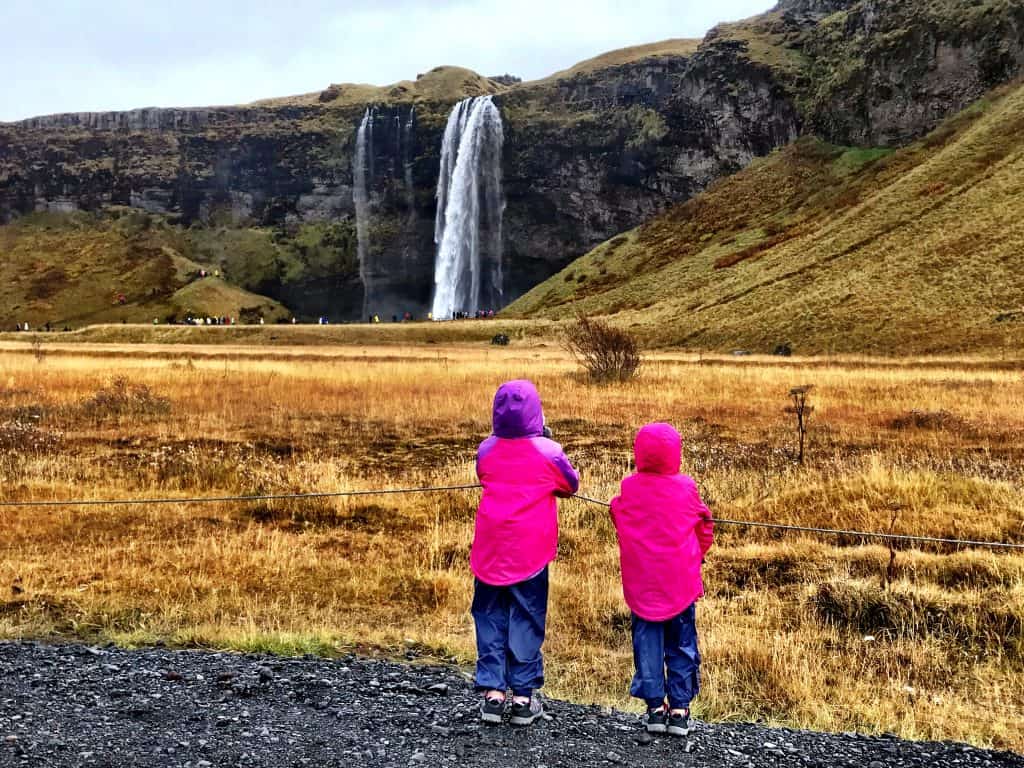
Our Traveling Homeschoolers’ Iceland Edition!
We love field trips involving world travel!
In preparation for a trip to Iceland (and the 9-hour flight each way!), we needed to fill our kids’ backpacks with things to keep them occupied and having fun. And, guess what? Books from our curriculum, Sonlight, fit perfectly!
We purposely worked ahead in science, math, and other language arts skills before the trip.
Before I knew it, on the flight to Iceland, Older Daughter had read Old Yeller in its entirety and had moved on to reading something else!
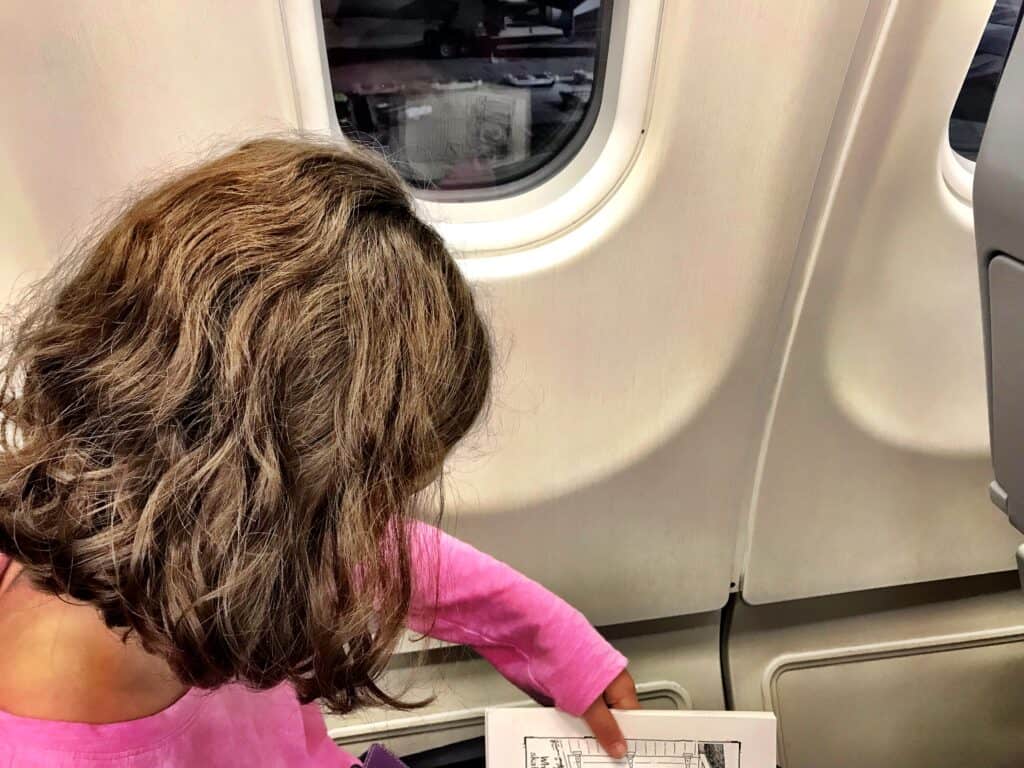
During the week in Iceland, she read Helen Keller and The Wright Brothers, without any prompting!
I even found her interrupting her own “reading” of an Icelandic cookbook to continue learning about Wilbur and Orville Wright, whose pioneering paved the way for aviation and travel as we know it (including flying to Iceland!).
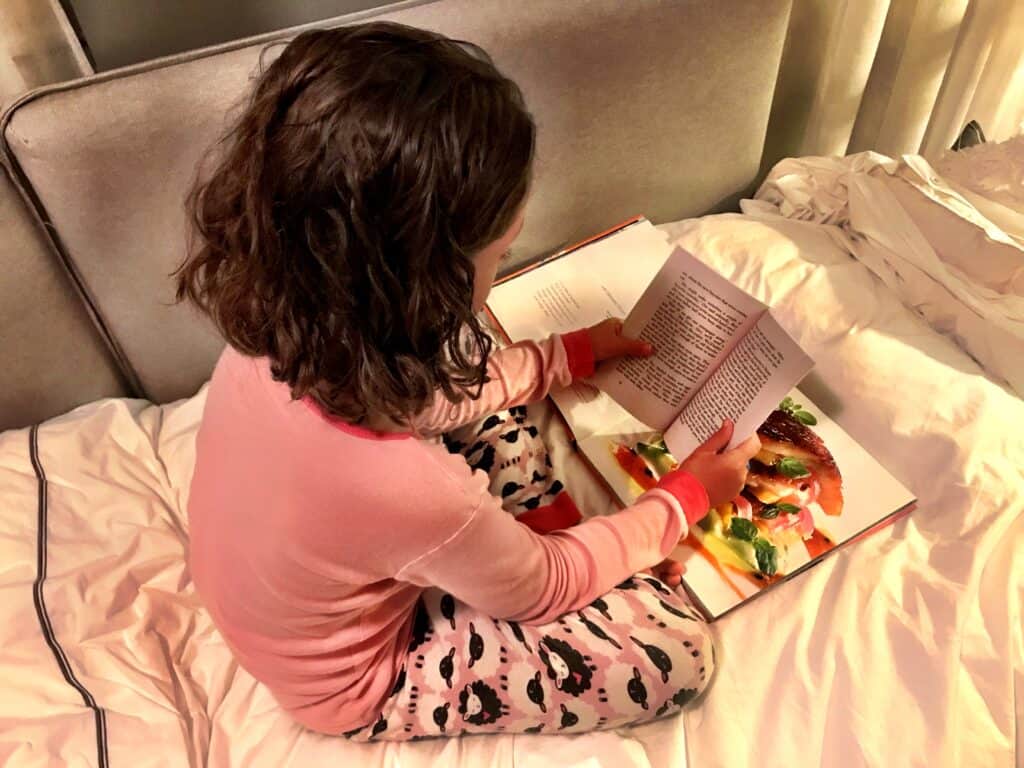
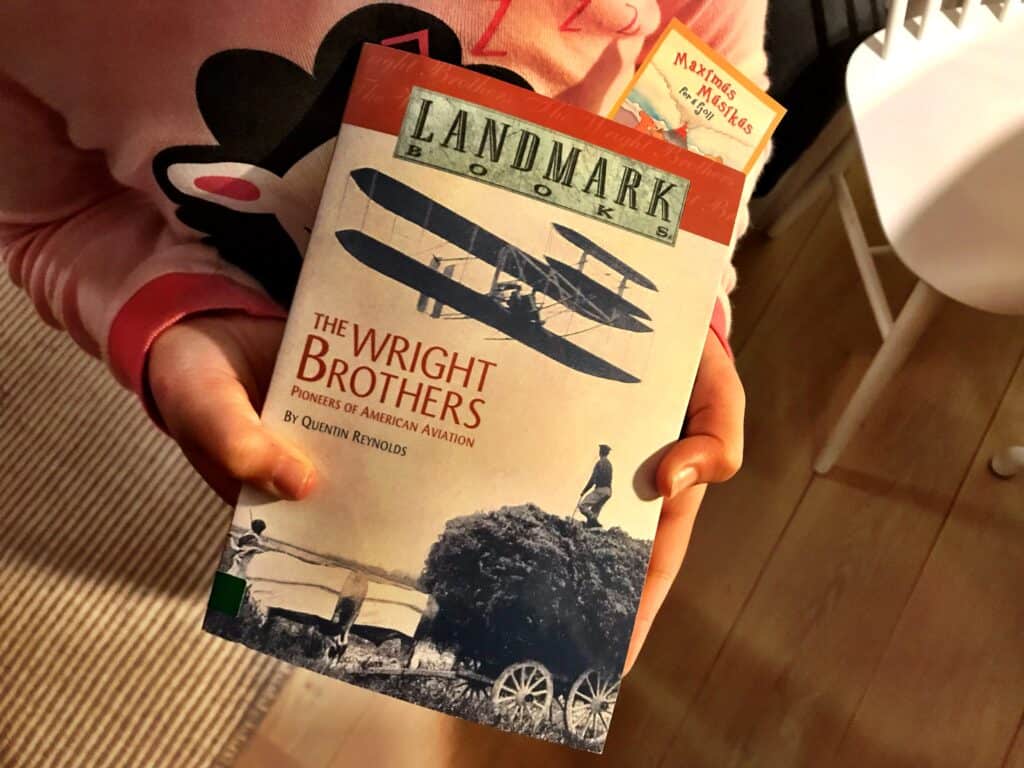
Travel Journal
As traveling homeschoolers, kid-level travel journals are a must! Besides helping the kids remember what they did each day, it’s a good way to keep up their writing skills while traveling. This is our favorite, inexpensive travel journal for kids right now.
What Did We Experience?
It’s more like…what didn’t we experience?!? In just one week of family travel…
Weather = cold, sun, rain, snow, wind
History = Vikings, general settlement, arrival of Christianity
The Arts = orchestra concert for children
Worship = attended an Icelandic language church service
Nature = the meeting up of two tectonic plates, geothermal activity – Ironically, one of Younger Sister’s readers on this trip was Pompeii…Buried Alive!
Science = Northern Lights! – What better way to reinforce concepts from our science curriculum than to see them firsthand? Here’s a page from The Usborne Book of Astronomy and Space, followed by one of our views of the aurora borealis (northern lights).
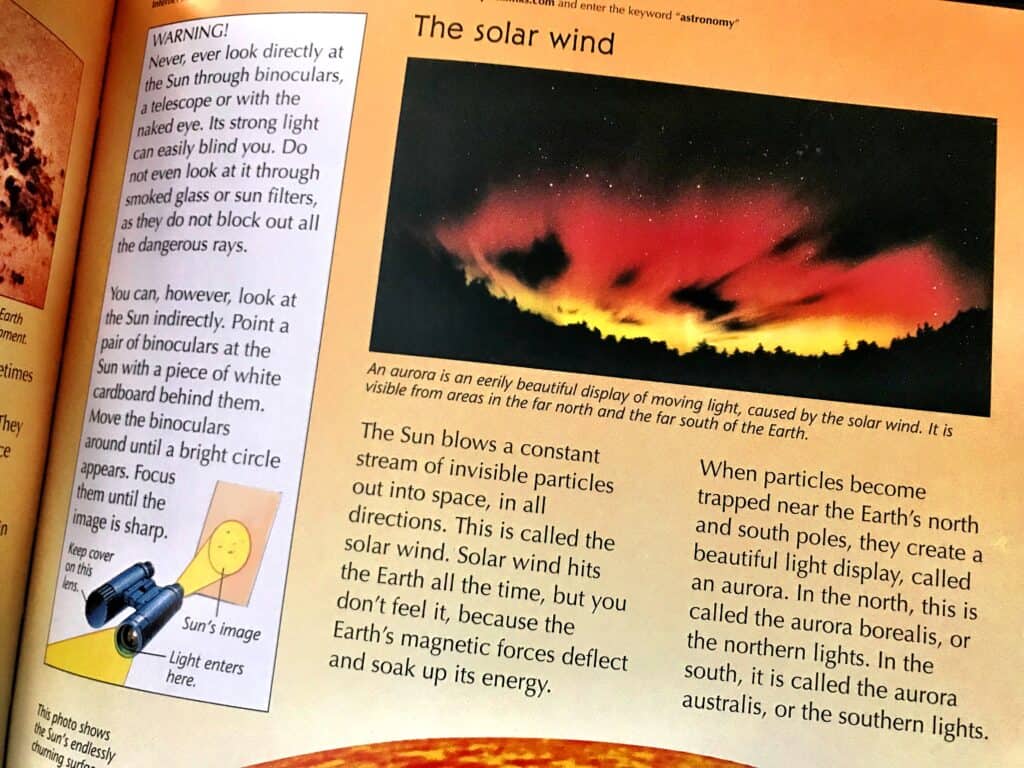

Frequently Asked Questions
Planning and balancing travel with homeschooling involves finding great discounts and integrating educational activities into your trips.
How can I score delightful travel discounts as a homeschooling family?
Travel companies often offer special deals for homeschooling families.
Joining mailing lists or homeschool groups (such as HSLDA) can also get you exclusive offers.
Don’t forget to check for educational discounts at museums, parks, and historical sites, which often provide reduced entry fees for homeschoolers.
How does one marvelously balance travel with a homeschool curriculum?
Balancing travel and education requires planning and flexibility.
Many families use a mix of online resources, local libraries, and hands-on learning. For example, incorporate geography and history lessons based on your travel destinations.
Interactive activities, like visiting science centers or participating in local cultural events, can enrich your curriculum.
SBT Summary: Traveling Homeschoolers
Traveling homeschoolers have the best of both worlds: education and adventure. They mix learning with exploring new places.
Your kids can study math while waiting for a plane or learn history by visiting ancient sites.
Benefits:
- Experiential Learning: Kids learn through real-world experiences, making subjects like history and science come alive.
- Flexibility: Create a schedule that fits your family’s travel plans.
Activities:
- Kids can observe different architectural styles and learn about columns and why they’re used in buildings.
- Pack books or Kindles for downtime during travel. Books can be fun and educational.
Destinations:
- Popular places include Washington DC, Boston, and many others.
Curriculum Tips:
- Choose a flexible curriculum that can be adapted for travel.
- Consider accredited or free homeschooling options for convenience.
Incorporating travel into your homeschool plan not only enriches your children’s education but also creates unforgettable family adventures that bridge learning with exploration.
ENJOYED THIS POST? PIN IT FOR LATER!
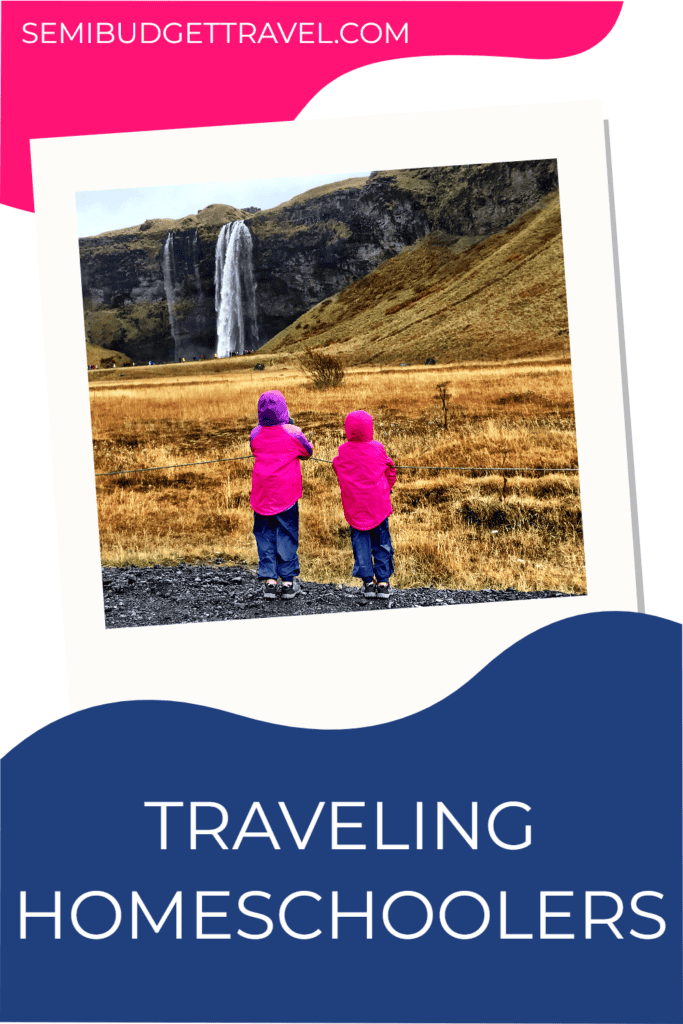
➡️ SUBSCRIBE ⬅️
STARTS WITH
A GREAT BUDGET!

ALL GREAT SEMI-BUDGET TRAVEL
It's easy! I will show you how with a FREE trip planning tool.







